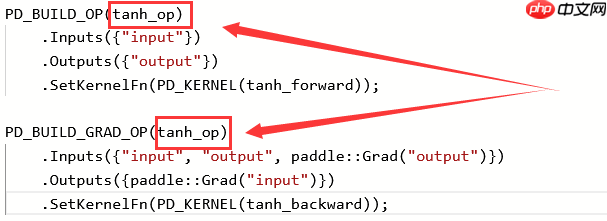c++扩展算子开发③:CUDA算子的开发
时间:2025-07-17 | 作者: | 阅读:0本文介绍了使用C++进行CUDA算子开发的流程,以tanh算子为例,包含编写.cu文件实现运算、.cpp文件实现Python调用绑定、.py文件实现安装。展示了前向输出和回传梯度与官方实现一致,还详细拆分了各文件代码及作用。
c++扩展算子开发③:CUDA算子的开发
项目说明
??在使用c++进行CUDA算子开发
开发流程
- 编写.cu文件
- 实现该算子的运算部分,在使用setup.py对算子进行安装时,nvcc程序针对.cu文件进行编译,并最终包含进动态链接库
- 编写.cpp文件
- 使得可以在python中调用CUDA kernel函数,.cpp调用上面.cu文件中启动函数,绑定到python中使用
- 编写.py文件
- 实现该算子安装
项目展示
??在GPU上面运行tanh算子,可以看到官方实现的算子和我们自己实现的CUDA算子的前向输出和回传梯度都一致???安装自己实现的tanh算子,运行后请刷新下环境!!!
In [?]!python setup.py install登录后复制登录后复制In [1]
import numpy as npx = np.random.random((4, 10)).astype(”float32“)print(x)登录后复制
[[0.8485352 0.82548 0.6914224 0.33665353 0.5060949 0.12096553 0.93415546 0.66898936 0.36616254 0.61785257] [0.9686086 0.8368737 0.87306726 0.5306038 0.35964754 0.09533529 0.6159888 0.5113984 0.3554379 0.92584795] [0.5851171 0.87855285 0.8729009 0.16328739 0.06106287 0.03119349 0.6431769 0.46255094 0.39092144 0.6841152 ] [0.41889587 0.85792965 0.48324853 0.8920178 0.7228439 0.2088154 0.18290831 0.74242246 0.770023 0.89185 ]]登录后复制
tanh(Offical)
In [2]import paddlepaddle_x = paddle.to_tensor(x, place=paddle.CUDAPlace(0))paddle_x.stop_gradient = Falsepaddle_y = paddle.tanh(paddle_x)paddle_y.backward()grad = paddle_x.gradient()print(”==========================================================“)print(”前向传播:“)print(paddle_y)print(”==========================================================“)print(”检测是否在GPU上:“)print(paddle_y.place)print(”==========================================================“)print(”梯度:“)print(grad)登录后复制
W0112 18:06:20.751464 7652 device_context.cc:447] Please NOTE: device: 0, GPU Compute Capability: 7.0, Driver API Version: 10.1, Runtime API Version: 10.1W0112 18:06:20.756742 7652 device_context.cc:465] device: 0, cuDNN Version: 7.6.登录后复制
==========================================================前向传播:Tensor(shape=[4, 10], dtype=float32, place=CUDAPlace(0), stop_gradient=False, [[0.69030344, 0.67804146, 0.59889495, 0.32448652, 0.46689692, 0.12037896, 0.73252547, 0.58431470, 0.35063058, 0.54963106], [0.74809217, 0.68414962, 0.70292914, 0.48584250, 0.34490353, 0.09504751, 0.54832906, 0.47103402, 0.34118930, 0.72865224], [0.52637470, 0.70569360, 0.70284498, 0.16185147, 0.06098709, 0.03118338, 0.56705880, 0.43216103, 0.37215433, 0.59418815], [0.39599988, 0.69518942, 0.44884148, 0.71238893, 0.61866784, 0.20583236, 0.18089549, 0.63060653, 0.64694285, 0.71230626]])==========================================================检测是否在GPU上:CUDAPlace(0)==========================================================梯度:[[0.52348113 0.5402598 0.6413248 0.8947085 0.7820073 0.9855089 0.46340644 0.6585763 0.8770582 0.6979057 ] [0.4403581 0.53193927 0.5058906 0.7639571 0.8810415 0.99096596 0.6993352 0.77812696 0.88358986 0.4690659 ] [0.72292966 0.5019965 0.5060089 0.9738041 0.99628055 0.9990276 0.6784443 0.81323683 0.86150116 0.6469404 ] [0.8431841 0.51671165 0.7985413 0.492502 0.6172501 0.957633 0.9672768 0.6023354 0.58146495 0.49261978]]登录后复制登录后复制
tanh(Ours)
1、安装tanh算子,运行后请刷新下环境!!!(前面已经安装了)
In [4]!python setup.py install登录后复制登录后复制
2、开始测试
立即学习“C++免费学习笔记(深入)”;
In [3]import paddlefrom custom_ops import tanh_opcustom_ops_x = paddle.to_tensor(x, place=paddle.CUDAPlace(0))custom_ops_x.stop_gradient = Falsecustom_ops_y = tanh_op(custom_ops_x)custom_ops_y.backward()grad = custom_ops_x.gradient()print(”==========================================================“)print(”前向传播:“)print(custom_ops_y)print(”==========================================================“)print(”检测是否在GPU上:“)print(custom_ops_y.place)print(”==========================================================“)print(”梯度:“)print(grad)登录后复制
==========================================================前向传播:Tensor(shape=[4, 10], dtype=float32, place=CUDAPlace(0), stop_gradient=False, [[0.69030344, 0.67804146, 0.59889495, 0.32448652, 0.46689692, 0.12037896, 0.73252547, 0.58431470, 0.35063058, 0.54963106], [0.74809217, 0.68414962, 0.70292914, 0.48584250, 0.34490353, 0.09504751, 0.54832906, 0.47103402, 0.34118930, 0.72865224], [0.52637470, 0.70569360, 0.70284498, 0.16185147, 0.06098709, 0.03118338, 0.56705880, 0.43216103, 0.37215433, 0.59418815], [0.39599988, 0.69518942, 0.44884148, 0.71238893, 0.61866784, 0.20583236, 0.18089549, 0.63060653, 0.64694285, 0.71230626]])==========================================================检测是否在GPU上:CUDAPlace(0)==========================================================梯度:[[0.52348113 0.5402598 0.6413248 0.8947085 0.7820073 0.9855089 0.46340644 0.6585763 0.8770582 0.6979057 ] [0.4403581 0.53193927 0.5058906 0.7639571 0.8810415 0.99096596 0.6993352 0.77812696 0.88358986 0.4690659 ] [0.72292966 0.5019965 0.5060089 0.9738041 0.99628055 0.9990276 0.6784443 0.81323683 0.86150116 0.6469404 ] [0.8431841 0.51671165 0.7985413 0.492502 0.6172501 0.957633 0.9672768 0.6023354 0.58146495 0.49261978]]登录后复制登录后复制
项目主体
.cu文件
??.cu文件主要是实现该算子的运算部分,在使用setup.py对算子进行安装时,nvcc程序针对.cu文件进行编译,并最终包含进动态链接库
代码拆分
??1、引入头文件,以及定义一个block含有的thread数目
In [?]#include <paddle/extension.h>#include <vector>#include <cuda.h>#include <cuda_runtime.h>#define BLOCK 512登录后复制
??2、定义前向传播运算函数??该函数是一个CUDA特有声明为__global__的模板函数,负责具体执行运算部分??这里的blockIdx,blockDim,threadIdx分别表示block索引,block维度,thread索引,GPU上有多个并发的线程同时负责以上计算,用gid=blockIdx.x * blockDim.x + threadIdx.x这一语句用来计算绝对索引,负责返回数据中某个位置处值,这样就只需要关注于单个线程计算过程
In [?]template<typename data_t>__global__ void tanh_forward_cuda_kernel(const data_t* input_data, data_t* output_data, int input_numel){ int gid = blockIdx.x * blockDim.x + threadIdx.x; for(int i=gid; i<input_numel; i+=blockDim.x*gridDim.x){ output_data[i] = std::tanh(input_data[i]); }}登录后复制
??3、定义前向传播启动函数??该函数是一个返回paddle::Tensor类型的函数,负责对输入进行一些转换,数据初始化以及返回前向传播运算成果??这里的PD_DISPATCH_FLOATING_TYPES这个宏,实现了动态分发机制(dynamic dispatch),即它会在运行时,根据输入具体的数值类型,去决定之前CUDA kernel模块函数需要实例化为哪种函数吗,这也是之前用模板类data_t的原因。??PD_DISPATCH_FLOATING_TYPES这个宏函数,传入的参数有三个:数据类型,用来报错的函数名、一个Lambda函数??①数据类型可以通过.type()获取??②用来报错的函数名可以自己命名,一般与该算子作用相关??③Lambda函数部分([&]表示该Lambda表达式中用到的外部变量是传引用的)包括前面2中实现的运算函数tanh_forward_cuda_kernel;运算函数后面用到了>>这一写法启动kernel,其中需要根据输出大小分配grid数(用grid = (input_numel + BLOCK - 1) / BLOCK算出来),并设置每一block中的thread数(宏定义中的BLOCK),还有传入tensor目前所在的stream;接着就是( )里面传递参数进运算函数tanh_forward_cuda_kernel
In [?]std::vector<paddle::Tensor> tanh_forward_cuda(const paddle::Tensor &input){ auto output = paddle::Tensor(paddle::PlaceType::kGPU, input.shape()); int input_numel = input.size(); int grid = (input_numel + BLOCK - 1) / BLOCK; PD_DISPATCH_FLOATING_TYPES( input.type(), ”tanh_forward_cuda_kernel“, ([&] { tanh_forward_cuda_kernel<data_t><<<grid, BLOCK, 0, input.stream()>>>( input.data<data_t>(), output.mutable_data<data_t>(input.place()), input_numel ); }) ); return {output};}登录后复制
??4、同理,定义反向回传的运算函数和启动函数
In [?]template<typename data_t>__global__ void tanh_backward_cuda_kernel(const data_t* input_data, const data_t* output_grad_data, data_t* input_grad_data, int output_numel){ int gid = blockIdx.x * blockDim.x + threadIdx.x; for(int i=gid; i<output_numel; i+=blockDim.x*gridDim.x){ input_grad_data[i] = output_grad_data[i] * (1 - std::pow(std::tanh(input_data[i]), 2)); }}std::vector<paddle::Tensor> tanh_backward_cuda(const paddle::Tensor &input, const paddle::Tensor &output, const paddle::Tensor &output_grad){ auto input_grad = paddle::Tensor(paddle::PlaceType::kGPU, input.shape()); int output_numel = output.size(); int grid = (output_numel + BLOCK - 1) / BLOCK; PD_DISPATCH_FLOATING_TYPES( input.type(), ”tanh_backward_cuda_kernel“, ([&] { tanh_backward_cuda_kernel<data_t><<<grid, BLOCK, 0, input.stream()>>>( input.data<data_t>(), output_grad.data<data_t>(), input_grad.mutable_data<data_t>(input.place()), output_numel ); }) ); return {input_grad};}登录后复制
完整代码
In [?]#include <paddle/extension.h>#include <vector>#include <cuda.h>#include <cuda_runtime.h>#define BLOCK 512template<typename data_t>__global__ void tanh_forward_cuda_kernel(const data_t* input_data, data_t* output_data, int input_numel){ int gid = blockIdx.x * blockDim.x + threadIdx.x; for(int i=gid; i<input_numel; i+=blockDim.x*gridDim.x){ output_data[i] = std::tanh(input_data[i]); }}template ??.cpp文件是为了使得可以在python中调用CUDA kernel函数,它调用上面.cu文件中启动函数,绑定到python中使用 ??1、引入头文件,以及定义PADDLE_WITH_CUDA和CHECK_INPUT(x)??①PADDLE_WITH_CUDA是用来能够获取Tensor.steam(),详细可看官方定义下的代码 #if defined(PADDLE_WITH_CUDA) /// bref Get current stream of Tensor cudaStream_t stream() const;#elif defined(PADDLE_WITH_HIP) hipStream_t stream() const;#endif登录后复制??②CHECK_INPUT(x)用来查验Tensor是否在GPU上面或者数据类型是否出错In [?] #include <paddle/extension.h>#include <vector>#define PADDLE_WITH_CUDA#define CHECK_INPUT(x) PD_CHECK(x.place() == paddle::PlaceType::kGPU, #x ” must be a GPU Tensor.“)登录后复制 ??2、声明.cu里的启动函数,以便后面编程时进行联想以及让编译器知道这么一个函数 std::vector<paddle::Tensor> tanh_forward_cuda(const paddle::Tensor &input);std::vector<paddle::Tensor> tanh_backward_cuda(const paddle::Tensor &input, const paddle::Tensor &output, const paddle::Tensor &output_grad);登录后复制 ??3、编写前向传播函数,主要实现调用.cu里的前向传播启动函数 std::vector<paddle::Tensor> tanh_forward(const paddle::Tensor& input) { CHECK_INPUT(input); return tanh_forward_cuda(input);}登录后复制 ??4、编写反向传播函数,主要实现调用.cu里的反向回传启动函数 std::vector<paddle::Tensor> tanh_backward(const paddle::Tensor& input, const paddle::Tensor& output, const paddle::Tensor& output_grad) { CHECK_INPUT(input); CHECK_INPUT(output); CHECK_INPUT(output_grad); return tanh_backward_cuda(input, output, output_grad);}登录后复制 ??5、使用PD_BUILD_OP系列宏,构建算子的描述信息,实现python与c++算子的绑定,作用有点类似PYBIND11_MODULE??PD_BUILD_OP:用于构建前向算子??PD_BUILD_GRAD_OP:用于构建前向算子对应的反向算子??注意:构建同一个算子的前向、反向实现,宏后面使用的算子名需要保持一致(此例中的tanh_op)??注意:PD_BUILD_OP与PD_BUILD_GRAD_OP中的Inputs与Outputs的name有强关联,对于前向算子的某个输入,如果反向算子仍然要复用,那么其name一定要保持一致(此例中的Inputs({"input"}和Outputs({"output"}),因为内部执行时,会以name作为key去查找对应的变量,比如这里前向算子的input与反向算子的input指代同一个Tensor PD_BUILD_OP(tanh_op) .Inputs({”input“}) .Outputs({”output“}) .SetKernelFn(PD_KERNEL(tanh_forward));PD_BUILD_GRAD_OP(tanh_op) .Inputs({”input“, ”output“, paddle::Grad(”output“)}) .Outputs({paddle::Grad(”input“)}) .SetKernelFn(PD_KERNEL(tanh_backward));登录后复制 #include <paddle/extension.h>#include <vector>#define PADDLE_WITH_CUDA#define CHECK_INPUT(x) PD_CHECK(x.place() == paddle::PlaceType::kGPU, #x ” must be a GPU Tensor.“)std::vector<paddle::Tensor> tanh_forward_cuda(const paddle::Tensor &input);std::vector<paddle::Tensor> tanh_backward_cuda(const paddle::Tensor &input, const paddle::Tensor &output, const paddle::Tensor &output_grad);std::vector<paddle::Tensor> tanh_forward(const paddle::Tensor& input) { CHECK_INPUT(input); return tanh_forward_cuda(input);}std::vector<paddle::Tensor> tanh_backward(const paddle::Tensor& input, const paddle::Tensor& output, const paddle::Tensor& output_grad) { CHECK_INPUT(input); CHECK_INPUT(output); CHECK_INPUT(output_grad); return tanh_backward_cuda(input, output, output_grad);}PD_BUILD_OP(tanh_op) .Inputs({”input“}) .Outputs({”output“}) .SetKernelFn(PD_KERNEL(tanh_forward));PD_BUILD_GRAD_OP(tanh_op) .Inputs({”input“, ”output“, paddle::Grad(”output“)}) .Outputs({paddle::Grad(”input“)}) .SetKernelFn(PD_KERNEL(tanh_backward));登录后复制 ??.py文件主要是实现该算子安装??在安装后引用该算子,以此为例,是通过from custom_ops import tanh_op来引用的??其中custom_ops来自setup.py部分的name里?? from paddle.utils.cpp_extension import CUDAExtension, setupsetup( name='custom_ops', ext_modules=CUDAExtension( sources=['tanh.cpp', 'tanh.cu'] ))登录后复制
.cpp文件
代码拆分
完整代码
In [?].py文件
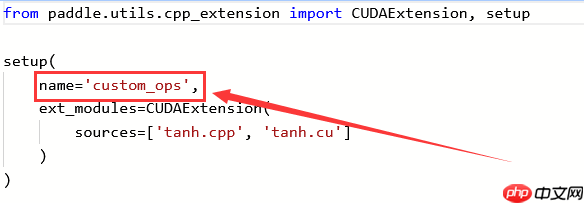
来源:https://www.php.cn/faq/1412548.html
免责声明:文中图文均来自网络,如有侵权请联系删除,心愿游戏发布此文仅为传递信息,不代表心愿游戏认同其观点或证实其描述。
相关文章
更多-

- nef 格式图片降噪处理用什么工具 效果如何
- 时间:2025-07-29
-

- 邮箱长时间未登录被注销了能恢复吗?
- 时间:2025-07-29
-

- Outlook收件箱邮件不同步怎么办?
- 时间:2025-07-29
-

- 为什么客户端收邮件总是延迟?
- 时间:2025-07-29
-

- 一英寸在磁带宽度中是多少 老式设备规格
- 时间:2025-07-29
-

- 大卡和年龄的关系 不同年龄段热量需求
- 时间:2025-07-29
-

- jif 格式是 gif 的变体吗 现在还常用吗
- 时间:2025-07-29
-

- hdr 格式图片在显示器上能完全显示吗 普通显示器有局限吗
- 时间:2025-07-29
大家都在玩
大家都在看
更多-
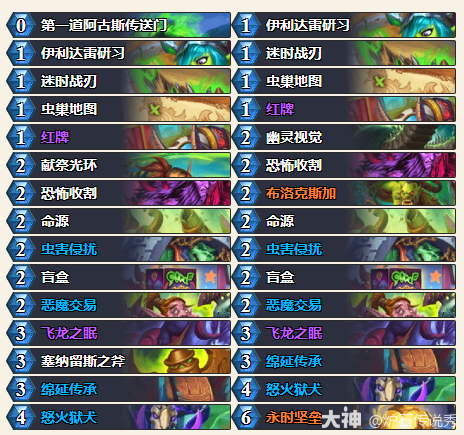
- 炉石传说CTTlabarashh永时奇闻瞎卡组代码分享
- 时间:2025-11-06
-
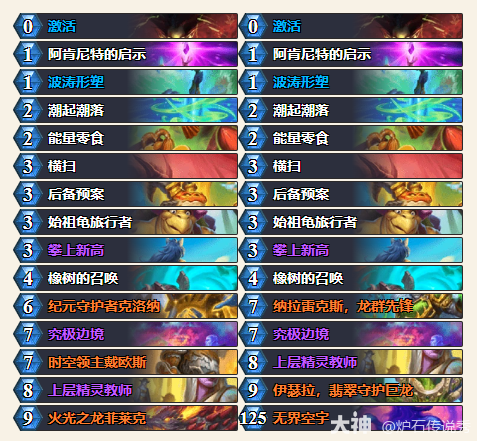
- 炉石传说CTThomiwas火龙德卡组代码分享
- 时间:2025-11-06
-

- 炉石传说CTTAlexander爆发贼卡组代码分享
- 时间:2025-11-06
-
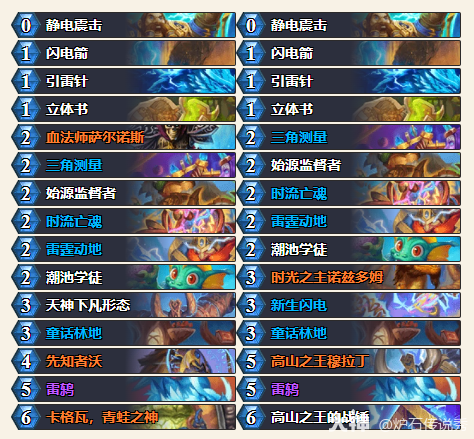
- 炉石传说CTThomi自然萨卡组代码分享
- 时间:2025-11-06
-

- 傲游浏览器怎么设置自定义主页
- 时间:2025-11-06
-

- 好听两个字情侣网名 唯美2字的游戏名
- 时间:2025-11-06
-

- 2?2?/??.????一种很新的十一月朋友圈
- 时间:2025-11-06
-

- 笔记本Fn键失灵修复小技巧
- 时间:2025-11-06

